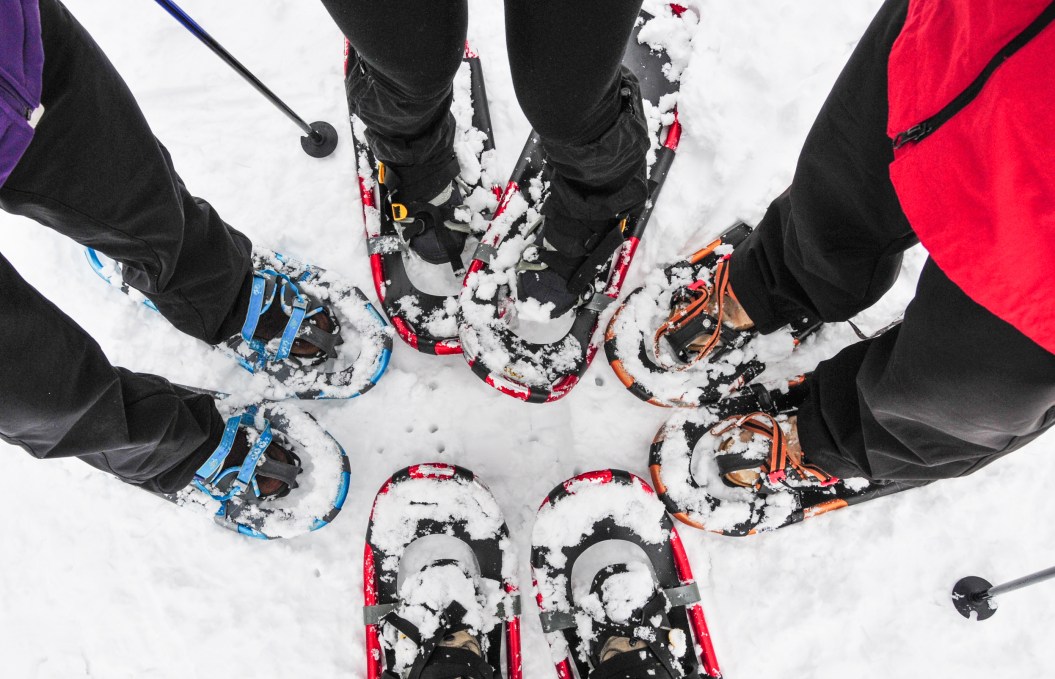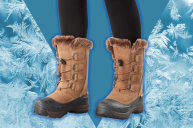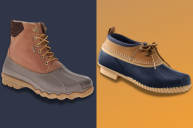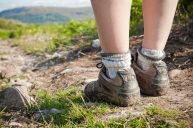After a couple of miles snowshoeing, the last thing you want to feel is the ever-familiar twinge of pain that comes with a newly forming blister—all the while knowing you have miles to go before you get to the first aid kit in your car. You've learned the lesson the hard way: Your boot choice is just as important as the snowshoes you put them in.
The good news is you might already own a pair of boots that works well for snowshoeing adventures. A solid pair of waterproof hiking boots or snow boots will do the trick, as long as they offer firm, comfortable support and a little traction when you're out of the snowshoes.
Personally, I snowshoe in a pair of snow boots I've had for about five years. They're incredibly comfortable, offer ankle support, coverage for my lower legs, and secure lacing from bottom to top to keep the snow out of my socks. The boots easily slide into my snowshoe bindings for a secure fit across the toe box and around the back. If they had more traction, they would be everything I need in a snowshoeing boot.
Want to enjoy snowshoeing but don't think you have the right pair of boots? Check out these seven top picks.
What to Look For in Snowshoeing Boots
Winter boots are often a snowshoer's go-to selection for footwear. But, undeniably, there are a lot of winter footwear options out there, and something like a waterproof hiking boot or a snow boot will work, too.
Whether originally intended for hikers, backpackers, or mountaineering, winter boots are usually waterproof, warm, and have solid traction. While your final decision to the type of showshoeing boot you want to strap in with will come down to comfort and personal preference, keep the following features in mind while searching for your perfect pair of cold-weather boots for snowshoeing. Winter boots for snowshoeing, particularly in the backcountry, need to be waterproof. The last thing you want is your socks getting wet, leaving your feet cold inside your shoe. More than being uncomfortable, wet socks can lead to blisters, frostbite, and even hypothermia. Look for winter boots with waterproof Gore-Tex membranes to keep water out while letting sweat escape as your feet perspire. Boots with synthetic uppers (like nylon) will dry out quickly while leather uppers may take a little longer to dry. And keep in mind, you can always treat leather boots with wax or spray for a waterproof coating. Boots with laces will give you a more precise fit than slip-ons, which will give you more control with every step in a snowshoe. Laces should be easy to tie with your gloves on while keeping your feet secure in the shoe. Boots with speed hooks give the tightest lacing to keep the snow out. Boots with bungee-like lacing or straps may not be as secure, letting snow in through the top of your shoe. Shaft height comes down to how much lower-leg coverage and ankle support you want or need, as well as your likelihood to encounter unpacked deep snow. It's all about what keeps you comfortable and dry. Some snowshoers wear mid-height boots with gaiters to avoid getting snow on their calves, while others (like myself) prefer to wear boots that come up the calf, providing a little extra coverage and negating the need for extra gear and layers. Just keep in mind, the higher up your boots lace, the more ankle support they offer. But conversely, they may limit mobility some. You don't want too heavy of a shoe to weigh you down while roaming around in the snow. Remember, your snowshoes are rated for total weight—meaning you, your backpack, and your shoes. While lighter shoes add less weight to your step, you don't want to sacrifice cushioning or insulation for a boot that might be a couple of ounces lighter. Trust me, by the time you finish your trek, you will wish you had the comfort and the weight difference will be negligible. Unlike with winter hiking, you don't need to worry about your showshoeing boots' traction as much, provided your snowshoes are on your feet. The snowshoe has built-in crampons to keep you sturdy in the snow, which is why some people even opt for waterproof running shoes while out on the snow. However, if you want a multi-purpose shoe, you want to select a boot with a little bit of grip on the sole, which my beloved snow boots sorely lack. I found that out the hard way—breaking my elbow—on a birthday trip for my son. Now I pay closer attention to the ground on the way to the trail and don't leave the parking lot without my snowshoes on.
Our Picks for the Best Snowshoeing Boots
Whether you're a beginner or a seasoned snowshoer, the boots below should have you heading in the right direction: toward the trails to enjoy a day of snowshoeing!
1. La Sportiva Nucleo High GTX Hiking Boots ($239)
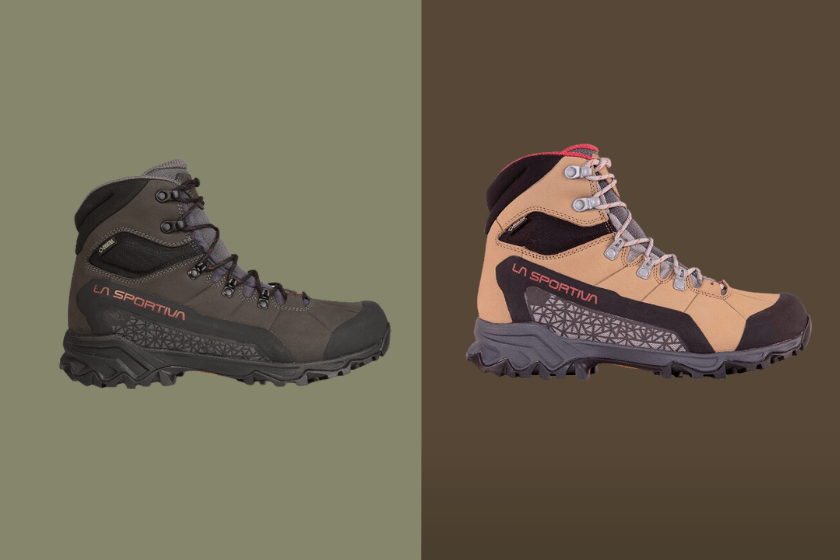
Wide Open Spaces
The La Sportiva Nucleo have quite the following in the hiking community as solid, all-season shoes, in large part thanks to its waterproof membrane. Its cushioned midsoles and superior support don't hurt, either. The design strives to keep your feet feeling like you just started the day, no matter where you are in your winter adventure.
While you might not gravitate toward leather uppers for snowy conditions, these are made from durable Nubuck leather, keeping the boot breathable and sturdy. Its one downside is that it is vulnerable to stains.
At $239 for the pair, this boot is a pricier option that only comes in one color and relies on your socks for extra insulation. But if you're looking for a one-and-done shoe to take you on all your adventures—no matter the season—these may be just the ticket.
2. Merrell Moab 3 Mid-Waterproof ($150)
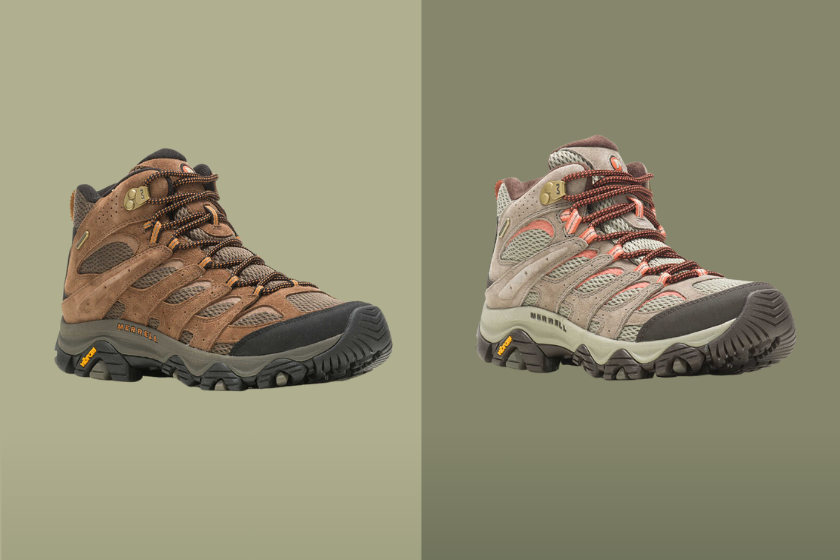
Wide Open Spaces
I have the regular Merrell Moab 3 Mids and I absolutely love hiking in them. Unfortunately, my pair is only rated water-resistant, not waterproof, but Merrell has solved this issue for you with this most recent iteration of the boot. The Moab 3s have an upper lining of a waterproof membrane, plus a layer of insulation, to keep your feet both dry and warm.
The mid-height provides plenty of ankle support and pairs well with a gaiter to keep the snow out. The tight lacing and webbed bellows-tongue prevent snow, dirt, and other trail junk from slipping into your shoe. Plus, the air cushion provides shock absorption to the boot's heel.
Most reviewers say to go up a half size, which I completely agree with—mine are a half-size larger than normal and are incredibly comfortable with thick socks. The Moab 3s come in a half-dozen colors and regular and wide widths.
Pro tip: Last season's colors are often on sale.
3. Muck Boot Arctic Sport ($150-$180)
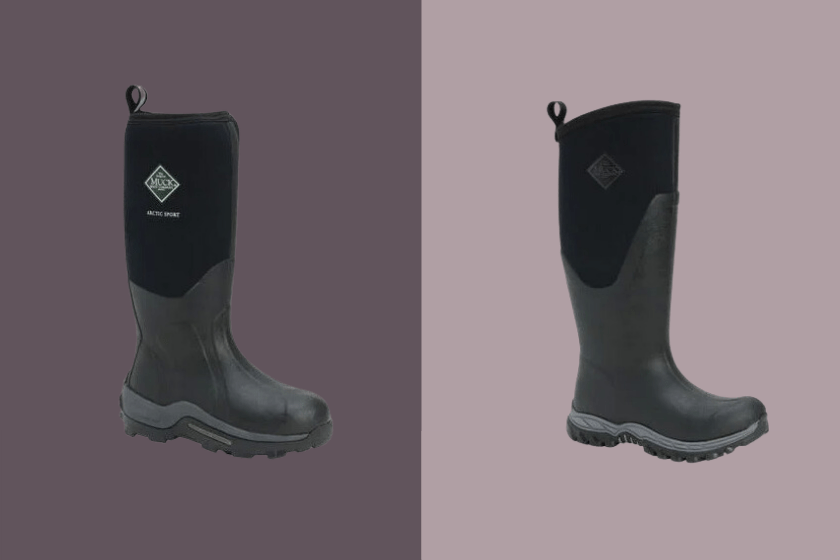
Wide Open Spaces
Muck Boots are my husband's go-to foot attire for snowshoeing. They keep his feet warm and dry, all while providing coverage for his calf with waterproof neoprene. They dry quickly and are durable while feeling lightweight and cozy, rated for temperatures to -40 degrees Fahrenheit.
The outsoles have superior grip for slick situations like ice fishing or navigating a patch of black ice, while the insoles will keep your feet comfortably cradled.
The Arctic Sport IIs come in a tall knee-height and a mid-calf height for both men and women, and an ankle height for women, in a couple of colors each. However, they only come in whole sizes and one medium width for each gender, so if you're between sizes or have narrow or wide feet, you may be out of luck.
4. Keen Revel IV and Greta Waterproof ($180-$200)
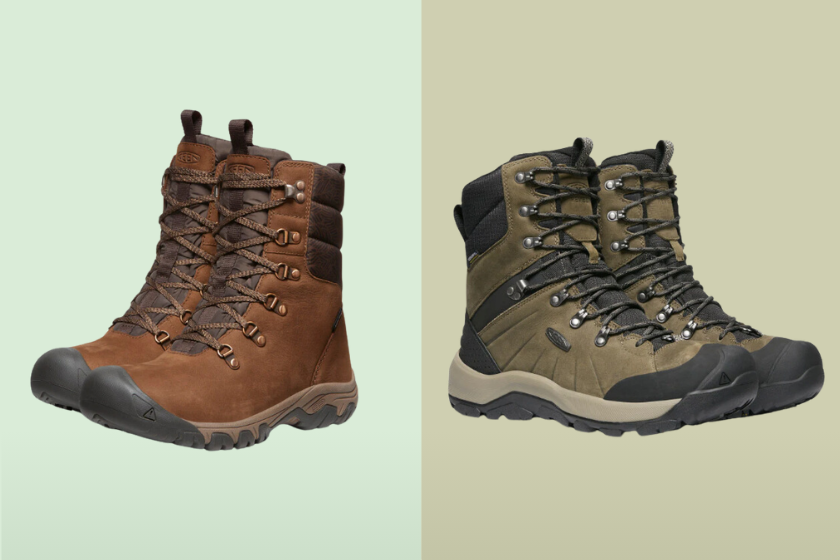
Wide Open Spaces
Keen is a well-respected shoe brand in the outdoor world for its high-quality and durability, and its men's Revel IV and women's Greta boots keep up with the brand's reputation. Both of these boots feature a waterproof leather and inner membrane that keep the foot dry while allowing it to breathe, no matter how many snow drifts you sink into or puddles you step in.
We're big fans of the insulation in the boot, with a rating of -25 degrees Fahrenheit. Plus, the outsole is resistant to freezing, keeping your heel flexible while providing traction, which you'll appreciate when you wear the boots sans snowshoes, to get into the car or trek to the bathrooms.
Note that the waterproof leather requires some care to keep it in top condition. Keen recommends you clean and condition it, especially the lighter colors, after every use. If you don't want boots that need upkeep to maintain their appearance, these may not be the snowshoeing boots for you. These Keens come in two colors, regular width, and whole and half sizes.
5. Danner Vital and Wayfinder ($170-$200)
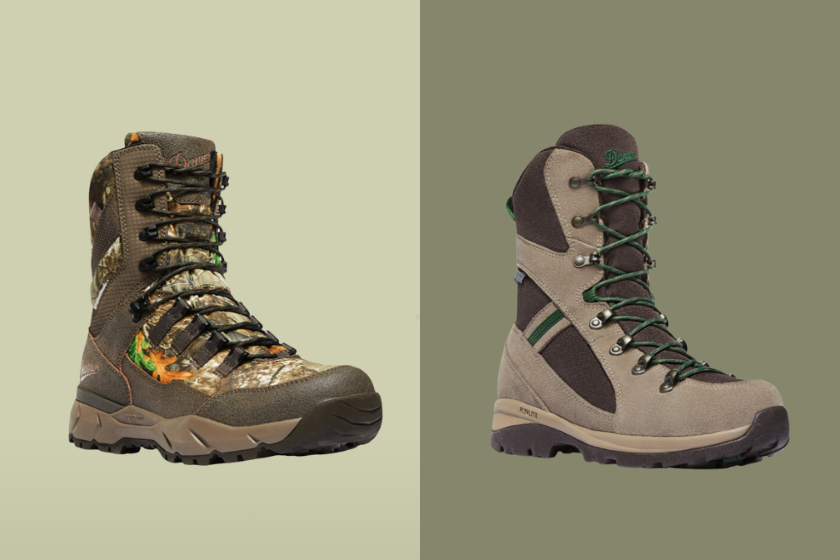
Wide Open Spaces
These lightweight, waterproof boots from Danner are a favorite of hunters and hikers alike and a viable option for comfortable snowshoeing boots that will keep your feet dry and comfortable. The waterproof moisture barrier allows air to circulate through the shoe, keeping your socks dry and your feet blister-free. Many reviewers say they could plop these on straight out of the box and hike in them all day.
If you're worried about temperature, the Vital and Wayfinder both have versions with Thinsulate lining to keep you warm no matter what the winter conditions bring.
6. Baffin Impact and Icefield ($230-$250)
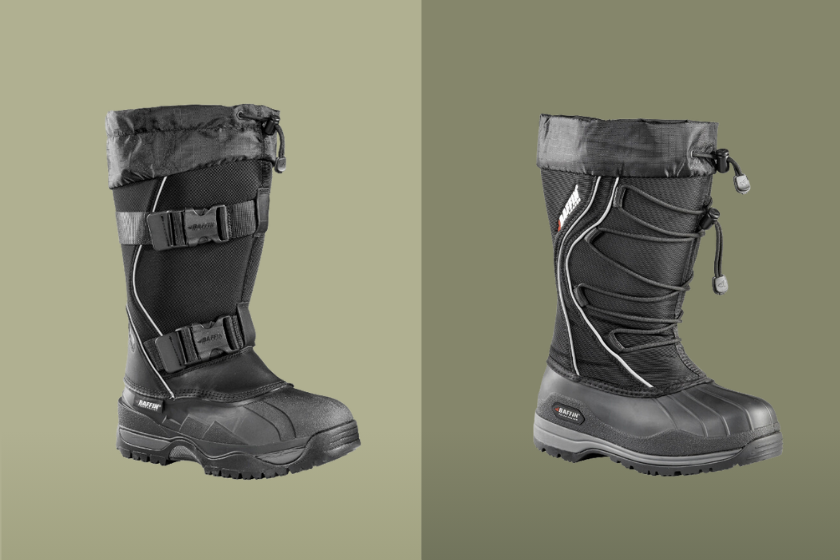
Wide Open Spaces
If maximum warmth is your top priority, the Baffin Impact for men and Icefield for women are the snowshoeing boots for you: They're incredibly well-insulated and "polar rated" to keep feet and lower legs warm in frigid temperatures.
The slip-in, mid-calf boots have either buckles (the men's Impact) or bungee-style laces (the women's Icefield) that secure the boot to the feet and lower legs. Both fasteners are a cinch tie around the calf to keep the snow out and the warmth in. The nylon upper dries quickly, while the durable rubber lowers hold up to wear and tear. Plus, your snowshoe's bindings will feel secure against the rubber exterior.
Like the Muck Boots, the Baffins come in regular widths and whole sizes only, and the brand recommends going up a size to compensate for the thick lining.
7. Sorel Explorer Next Snow Boot ($130-$155)

Wide Open Spaces
This family of winter boots from mainstay Sorel comes in a variety of colors and materials. What these waterproof sneaker-boots all have in common: They're waterproof and warm with cozy 100g lining. The rubber outsole has enough traction to keep your foot secure in your snowshoes and on the sidewalk, creating a multi-use winter boot for active wearers.
The Sorel Explorer boots are a lower-height option with the shaft coming just over the ankle, which may allow you the freedom of movement you desire when snowshoeing, or may not not provide enough support for some snowshoers. Either way, you may prefer to add gaiters to keep the snow out unless your snow pants tuck into the top of the boot.
READ MORE: 9 Things That Will Keep You Alive This Winter in the Backcountry
